The Virginia Continental Line had suffered with recruitment since the spring of 1777. Desertion, battlefield casualties, and competition with other state units prevented enough men being recruited to replenish the ranks of Virginia’s fifteen regiments. A new recruiting act, including a limited military draft, had produced fewer than 800 recruits for the Virginia Continental Line by the spring of 1778, and most of these new recruits were only enlisted for one year.[1] A new recruiting law and the appointment of a veteran officer to oversee the recruiting service provided hope for the regiments. The shift of British strategy to the South altered the destination of the recruits and the focus of Virginia’s military efforts.
Gen. George Washington had hounded Virginia Gov. Patrick Henry to encourage a new recruiting law from the General Assembly. In October 1778, the General Assembly passed a new law entitled “An act for speedily recruiting the Virginia regiments on continental establishment.” It authorized the raising of 2,216 men for continental service. Washington’s complaints about the short one-year enlistments weren’t entirely ignored, as the shortest enlistment allowed was for eighteen months. A bounty of $300 was offered for those who enlisted for eighteen months, while those who enlisted for three years or duration of the war were offered $400, in addition to any continental cash and land bounties. Another fear for prospective recruits was the lack of supplies in the Continental Army and being marched out of Virginia without proper clothing or equipment. Under the new act, the recruit was to be furnished with a coat, waistcoat, beeches, two shirts, one hat, two pairs of stockings, one pair of shoes, and a blanket, to be delivered to the men when gathered to go join their regiments.[2] Until the recruit received these articles, he was not required to march out of Virginia.[3] Any men who were disabled in service were entitled to receive full pay for life, while whose who died in service had the same provision passed on to their wives and children. Washington was impressed by the new terms, believing that if men couldn’t be induced to enlist with these liberal offers, then nothing more could encourage it.[4]
Each county was required to furnish one-twenty-fifth of their county militia for continental service by May 1, 1779. Each county lieutenant was ordered to divide their militia rolls into groups of twenty-five men, with ages ranging from eighteen to fifty, and required each group to send one man into service. If a county was able to fill its quota with voluntary enlistments by the deadline, then that county’s militia would not be called out until counties that didn’t fill their quota had their militia serve a tour of duty first, except for invasion or insurrection. Counties who didn’t fulfill the quota from the February 1778 draft were also required to fill the past quota in addition to the new quota. Those who enlisted would be allowed to choose what company and regiment they wanted to serve in once they reached Washington’s Army. If anyone who enlisted for eighteen months reenlisted for three years or duration of the war before being discharged, then they would receive a higher bounty. There were provisions for those who weren’t allowed be enlisted. Apprentices or hired servants who worked at iron works or in manufacturing arms were not allowed to enlist without leave in writing.[5] Enslaved men and indentured servants were also not allowed to enlist in continental service.
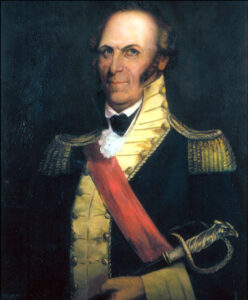
The drive for recruits under the new law began in the winter of 1779. Some counties resorted to a draft to attempt to fill their quota, while others had their militia divisions offer money for those who would serve in place of them. In Hanover County, James Hughes was hired by a man “of high standing” in his “division” to serve for eighteen months.[6] Once enough recruits were had, they were inspected and ordered to join the army in the spring. Before 1779, the duty of escorting Continental levies (another word for recruits) was done by militia officers or furloughed Continental officers. This was not always successful, as one officer in 1778 brought in only seven of twenty-eight men from Virginia. General Washington ordered Brig. Gen. Charles Scott to assume command of the levies and bring the men into camp. Scott was one of the most experienced officers from Virginia, starting as a commander of independent volunteers in the summer of 1775 and commanding Washington’s light infantry throughout 1778. Scott had been allowed to return to his home in Powhatan County for the winter, and Washington hoped that Scott would organize the men.[7] Washington sent his orders to General Scott in March 1779, and Scott immediately reported to Governor Henry at the capital of Williamsburg.
General Scott had to not only gather the new levies, but also round up furloughed veterans. Furloughs were offered to serving soldiers who reenlisted for the duration of the war. Recruiting parties were sent through the regiments to convince the men to reenlist, and several hundred took up the offer. These men were marched back to Virginia with one officer from each regiment, with instructions on where to gather when their furloughs expired.[8]
Each regiment was allowed to send one officer south to recruit; Lt. Samuel Hogg was the recruiting officer of the 1st Virginia.[9] Scott communicated to Hogg and the other officers to gather their men at one of two places; those recruited north of the Rappahannock River were ordered to gather at Alexandria by April 20, while those recruited south of the Rappahannock were ordered to gather at Fredericksburg by April 25.[10] The only concern Scott had at the time was that he would not have enough clothing to send the full force to Washington.[11]
Scott arrived at Alexandria on April 21 to find that “not one rag of clothes nor a single man” had been gathered there despite his order.[12] He blamed the lack of men and clothing on the county lieutenants and moved to Fredericksburg on April 24. At Fredericksburg, 400 new levies and 200 reenlisted veterans were found. Through some difficulty, 300 of the levies and 100 of the veterans were clothed and equipped to proceed to march north.[13] These men were led by Maj. William Lewis of the 10th Virginia and marched through Maryland and Delaware before halting roughly twenty miles from Philadelphia, when ordered back to Virginia.[14]
As Scott gathered his levies and veterans, concerns in South Carolina drew the attention of both sides. The capture of Savannah, Georgia the previous year had opened a new focus for the British military, and Charlestown, South Carolina was the next target in the effort to regain control of the South. Maj. Gen. Benjamin Lincoln commanded the Southern Department and asked for reinforcements in the form of regular troops. Washington feared that unless a force of “more permanent troops than militia” was collected to help Lincoln, the southern states would be lost.[15] On May 5, Washington ordered General Scott to organize his men into three detachments and march them as one brigade to join General Lincoln.[16] The furloughed veterans were allowed to remain with Scott as well, as Washington hoped that having veterans mixed with inexperienced men would have a positive effect.[17] To help Scott organize the three detachments, a group of Virginia officers led by Col. Richard Parker of the 1st Virginia were ordered from the Continental encampment from Morristown, New Jersey to go to Virginia.[18] The officers were described as a “fine choir,” though not all were excited for the change of scenery. Lt. Col. Gustavus B. Wallace of the 11th Virginia wrote to furloughed Col. John Cropper that there was a “ten to one” chance against his returning to Virginia alive from the South “as the country is so sickly.”[19]
Before the levies were marched to South Carolina, a British force landed at Portsmouth and raided southeastern Virginia. Governor Henry called for militia to defend Williamsburg, and Scott was ordered to bring all the levies he could gather to Williamsburg with all speed.[20] General Scott arrived with his men, who were mostly unarmed still, and were set to building defenses around the city and drilling. Muskets were eventually given to some of the men, but they weren’t needed. The British left before the end of May with no shots fired. Scott did lead his men into a sham battle at Williamsburg to get them accustomed to the sound of musket fire. The raid prevented the levies from marching south for another month. In the confusion of the British threat and the focus on raising the militia, the issue of clothing was not solved and prevented many men from receiving their proper clothing. Washington approved of Scott’s participation in the raid, but later wrote that Scott should not allow his levies to respond in the future unless enough militiamen couldn’t be called up.[21]
By the end of May 1779, Scott had the levies on the march to Petersburg, Virginia.[22] Petersburg was chosen as the rendezvous station for the levies in the future, as it was the last major settlement before a long march south. Scott eventually gathered around 1,300 levies and veterans to be divided into three detachments.[23] Due to the clothing and arms issue, Scott determined to send one detachment at a time, rather than waiting longer to march them down as one. Scott’s plan gave the Southern Army under Lincoln a steady flow of reinforcements, though small in strength. The 1st Virginia Detachment was organized under the command of Col. Richard Parker with the help of Lt. Col. Samuel Hopkins, both of the 1st Virginia, and Maj. Richard C. Anderson of the 5th Virginia. The 2nd Virginia Detachment was led by Col. William Heth of the 3rd Virginia and was joined by Lt. Col. Gustavus B. Wallace and Maj. William Lewis.[24] The 3rd Virginia Detachment was led by Col. Abraham Buford of the 11th Virginia, Lt. Col. Samuel Hawes of 6th Virginia, and Maj. Thomas Ridley of the 6th Virginia.[25]
The detachments departed in numerical order. Even within the 1st Virginia Detachment, not all the men were clothed enough to march south. With Charlestown under threat, Scott and Parker asked the new governor of Virginia, Thomas Jefferson, that the men be offered money in lieu of clothing to get them marching.[26] Governor Jefferson approved, and Parker was able to collect 400 men to go south on June 27.[27] He marched his men through North and South Carolina and arrived in Georgia in August 1779. Soon after, the Virginians were engaged in a skirmish with Loyalist partisans as they marched to Augusta.[28] They arrived there by August 15, along with Maj. John Jameson of the 1st Continental Light Dragoons.[29] These reinforcements were welcomed by General Lincoln, whose own army had been reduced to a skeleton force after the Battle of Stono Ferry due to the departure of the militia.[30] The arrival of Parker and Jameson had a positive effect on the Georgia militia, which Lincoln remarked were now under arms cheerfully and taking the field against partisans and native warriors.[31] Lt. Col. John Laurens, however, was not as optimistic when he wrote that the arrival of the Virginians only increased the strength of the Southern Department to its “ancient number.”[32] The men of the 1st Virginia Detachment spent the next month responding to alarms from Natives and “quieting the disaffected,” as veteran Nathan Wright later recalled.[33]
By September 16, the 1st Virginia Detachment had marched from Augusta to outside of British-held Savannah, Georgia. They joined other American forces led by General Lincoln and French troops led by Comte d’Estaing in the attempt to retake the city. For the siege, the 1st Virginia was brigaded with the 2nd South Carolina Regiment and three regiments of South Carolina militia.[34] After a bombardment of the city, the 1st Virginia advanced in support of the 2nd South Carolina against the Spring Hill Redoubt on the British right flank. A soldier who took part reported that many of the attackers, including “the whole of Col. Parker’s regiment, had passed the abatis and got to the redoubts and entrenchments but could not pass them.”[35]
The attack failed, with the losses of the 1st Virginia Detachment being the highest in the entire attack: 13 killed and 51 wounded, out of the 166 officers and men who participated in the attack.[36] Lt. Samuel Hogg recalled that he lost one third of his platoon.[37] Colonel Parker went into the attack with two of his brothers, Capt. Alexander Parker and Lt Thomas Parker. Thomas was wounded at the British fortifications and was captured.
Following the failed siege, the 1st Virginia Detachment marched back to Augusta, while most of the wounded were moved by sea to Charlestown for medical care. For some of these wounded the journey was not a pleasant one. Soon after being put to sea, stormy weather caused one of the vessels to be separated from the others. For four or dive days afterwards, those on board feared for their lives as they waited to find land or sink. The vessel finally struck land near modern-day Daytona Beach, Florida. Pvt. James Hughes, who had been sent to assist the wounded onboard, recalled there was “great rejoicing on the little island that night.”[38] The next morning, they found the island uninhabited and remained there for about a week. Four or five men died of starvation on the island before British troops arrived and took them to Saint Augustine where they remained prisoners until February 1780.[39]
While the 1st Virginia Detachment marched and fought in Georgia, General Scott continued his attempts to send reinforcements to the South. Governor Jefferson proposed to have posts manned by Continental officers, but Scott did not approve as he barely had enough officers to command his companies at Petersburg.[40] Washington, in turn, could not spare any more officers to help Scott. The last officers to come from Washington’s army were newly appointed ensigns, many of whom were promoted from the rank of sergeant.[41] He instructed Scott to find “any young fellows” who were willing to enter the service and appoint them as officers if Scott thought they were able enough.[42] Scott also wanted to replace some officers who he believed were inefficient, including Lt. Martin Carney of the 4th Virginia, who Scott claimed “ought not to have born the rank of corporal.”[43] Desertions also were an issue. Many of the men had second thoughts about serving in the South. A troop of the 3rd Continental Light Dragoons was kept at Petersburg until the spring of 1780 to police the area and arrest those who attempted to desert.[44] Surgeons were also in short supply; many men fell ill with no medical care to speak of. Scott tried to hire a local doctor named John Shore, Jr., but he proved to be too expensive. Two surgeons were eventually sent from Washington’s army but did not arrive until the late fall.[45] By November 1779, Scott reported 1,002 men in service, including the 1st Virginia Detachment, a decrease from the 1,300 who arrived at Petersburg in June.[46] Scott, however, was successful in sending the 2nd Virginia Detachment in October 1779 with 400 officers and men. Col. William Heth led the detachment to Charlestown, where they arrived in December.
The 2nd Virginia Detachment was joined by the 1st Virginia Detachment by February 14, 1780, when they and the 3rd North Carolina Battalion were organized into a brigade with Colonel Parker assuming command. While occupied with guard duty and drill, some of the Virginians misbehaved, which led to courts-martial. Pvt. John Lockyer was charged with disobedience of orders and “abuse to Sergt. Gresham,” for which he was found guilty and ordered to ask for Gresham’s pardon. Lieutenants Philip Mallory and Isaac Webb accused each other of “malconduct and unofficer like behavior as well as ungentlemanlike behaviour” on the march to Charlestown. Lieutenant Colonel Wallace and four other officers were assigned to investigate the claim, but it does not appear that it was solved before the spring campaign. More serious charges were also tried. A soldier referred to as “Corporal Bell” was found guilty of drunkenness and neglect of duty, reduced to the ranks, and received thirty-nine lashes. John Green and John Sumerville were charged with robbing a man in the streets of Charlestown, while John Marr was accused of “being absent without leave, riding in town, and selling his Continental shoes.”[47] None had enough witnesses against them and all three were returned to the guard, with no further sign of punishment.
The last detachment of Scott’s command in Virginia was the 3rd Virginia Detachment, led by Col. Abraham Buford. The largest concern for this detachment was the lack of shoes. In November 1779, shoes purchased from the Williamsburg merchants George Purdie and John Greenhow were only enough for 114 men, out of the nearly 250 stationed at Petersburg.[48] The next spring another surge of recruits brought the detachment strength to roughly 400 officers and men. In February 1780, they were joined by the Virginia troops from Washington’s army led by Gen. William Woodford, as they were marched from New Jersey to South Carolina. General Scott, who was not going to let Woodford get to Charlestown before him, left in March with his staff to join the 1st and 2nd Virginia Detachments. Men were taken from Buford’s Detachment as well to join other commands as Woodford’s Virginians moved south. Thirty recruits stationed at Williamsburg that were meant for Buford were assigned instead to Capt. Francis Minnis of the 1st Virginia and marched to Charlestown with General Woodford.[49] 140 of the best clothed and equipped men marched from Petersburg in mid-March as guards for the artillery going south.[50] The rest of the 3rd Virginia Detachment joined them on the march by mid-April.
While the 3rd Virginia marched to South Carolina, General Scott and his command prepared to defend the city of Charlestown. Scott took command of the brigade from Colonel Parker. The Virginians continued to do duty in Charlestown, including having a detachment made up to perform a unlikeable duty: to go through the streets and alleys to kill dogs, for which the soldiers received one dollar for each dog. The Virginians took to the fortifications when the British began their siege on April 2, 1780. Colonel Parker was assigned to command the guards at the Half-Moon Battery and the pickets in between the lines there.[51] Some men were sent on parties between the lines to repair the works, as well as skirmish with enemy pickets.[52] Half of the brigade was constantly on the works while the other half rested.[53] Woodford’s Virginia Brigade arrived on April 7 to much celebration and joined Scott’s men on the front lines.[54]

Shortly after Woodford’s arrival, the officers of the 1st and 2nd Virginia Detachment approached General Lincoln about a new arrangement of the Virginia regiments. They saw the detachments as temporary and wanted to be merged with the regiments of Woodford’s Brigade. Woodford wrote to General Washington that he intended to oppose the new arrangement. Woodford had already gone through his own “pains and infinite fatigue” to get the eleven regiments from Washington’s army merged into three and marched down to Charlestown. “An alteration at this time will occasion much confusion,” Woodford wrote, “and make the troops of the line much less serviceable in the Siege then they would be to remain as they are.”[55] Woodford and Scott remained in command of their respective brigades for the remainder of the siege.
The Virginians remained on the front lines on the left flank of the American earthworks, with Scott’s brigade around the Half-Moon Battery on the extreme left and Woodford’s brigade around the Horn Works near the center. Some men were detached to help operate artillery for most of the siege. A solider of the 2nd Virginia Detachment, named “McAdams” in the orders of the day, received 100 lashes for attempting to desert and was put in chains for the remainder of the siege. Boredom led to gambling, which was disapproved of by the officers. One sergeant in the 2nd Virginia Detachment was reduced to the rank of private for “encouraging the soldiers in gaming by his presence.”[56]
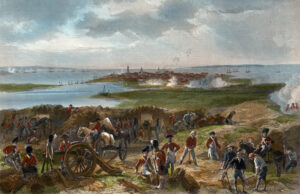
The Siege of Charlestown lasted until May 12, 1780, when General Lincoln surrendered to British Gen. Sir Henry Clinton. Available records do not show the casualties of General Scott’s Brigade, but Private Jesse Nicholson of the 1st Virginia Detachment later wrote that his brother was killed in the siege, while he and two of his half-brothers were captured. Col. Richard Parker was the only officer in the brigade killed at Charlestown. On the night of April 24, a party of men went out of the earthworks to repair a redoubt. The British began to fire on them. Sgt. Thomas Porter of the 1st Virginia Detachment was present and reported that the firing between the lines became “rapid and general.” The firing began to slack, and Colonel Parker, who was near Sergeant Porter, “raised his head just above the works and received a ball in his forehead and expired instantly – only exclaiming ‘O! Lord!’”[57]
The Virginians marched out of the fortifications on May 12 to lay down their arms and became prisoners of war. The 1st Virginia Detachment, now commanded by Lieutenant Colonel Hopkins after Parker’s death, surrendered one lieutenant colonel, one major, three captains, six lieutenants, and 258 men. Colonel Heth surrendered the 2nd Virginia Detachment, with one colonel, one lieutenant colonel, one major, five captains, five lieutenants, and 323 men. The enlisted men were confined to a barracks at Charlestown for five months. After many escape attempts, they were put aboard prison ships in the harbor.[58] The officers were separated and taken to Haddrell’s Point, where they stayed in barracks as well.[59]
The 3rd Virginia Detachment failed to arrive at Charlestown. Buford had halted his men when he heard of the siege and waited for orders before he proceeded toward Lenud’s Ferry, thirty-two miles from Charlestown along the Santee River, where they camped. The 3rd Virginia was to meet a force of Continental dragoons led by Lt. Col. Anthony White with boats to help them cross the Santee after White’s defeat at Monck’s Corner several days before. Lt. Col. William Washington urged White to let his men swim across the river rather than wait, but White dismissed the idea. On May 6, British Lt. Col. Banastre Tarleton caught White and Washington off guard and attacked them with his command of dragoons. Buford arrived with 150 men only to witness the disaster on the other side of the river. Unable to assist, Buford and the Virginians watched as the British dragoons “hacked many of the men in the most shocking manner.”[60] The 3rd Virginia Detachment met a similar demise only weeks later. On May 29, Tarleton caught up to Buford near the Waxhaws in South Carolina, where Buford refused to surrender to Tarleton. The resulting defeat led to the deaths of 113 Virginians, and over 200 more wounded or captured. In short, within thirty days, General Scott’s three detachments were reduced to 100 men retreating toward Virginia.
There were no attempts to reconstruct the three detachments. Instead, Gen. Peter Muhlenberg and Governor Jefferson turned their focus to reconstructing the original Virginia regiments based off their original organizations, though this was never realized. Instead, all the continental battalions raised in Virginia after the spring of 1780 were structured and raised in a similar manner that Scott had done in 1779. Colonel Buford was given command of the first battalion, with the survivors of the Waxhaws Massacre as his nucleus. Many were discharged at the end of their eighteen-month enlistment in October 1780, while some remained in service through the end of the war. Some of these veterans were assigned to the company commanded by Capt. Andrew Wallace, who led them against Tarleton’s forces at the Battle of Cowpens. Others later joined the light infantry under the command of William Washington.[61] Lieutenant Hogg escaped from Charlestown to help recruit in Virginia for the remainder of the war.[62] Many were exchanged in July 1781, and roughly 100 were organized by Capt. Alexander Parker and fought at the Siege of Yorktown, where they witnessed the surrender of many of the same regiments that fought against them at Charlestown.[63] Other exchanged men were discharged, as their enlistments had ended while prisoners. Many immediately went into service with the militia during the Siege of Yorktown. James Hughes, veteran of the sieges of Savannah and Charlestown, volunteered to take another man’s place in the militia because he had become “used to the roar of the cannon.”[64]
Many of the officers and men who were captured at Charlestown and Waxhaws spent the remainder of the war as prisoners. Some were successful at escaping and returning to service. Isaac Marshall of the 1st Virginia Detachment escaped in 1781 and later served as a lieutenant in the South Carolina State Troops under Andrew Pickens and Samuel Hammond.[65] Henry Boyd of the 2nd Virginia Detachment escaped with two comrades by floating away on a plank of wood.[66] John Bradshaw escaped and made his way to Virginia to join Colonel Gaskins’ Battalion in 1781 and fought at the Siege of Yorktown. Some prisoners were sent to Jamacia to remain in captivity until the end of the war. William Knight escaped from Jamacia, snuck aboard a ship, and arrived at New London, Connecticut, where he made his way back to Virginia once the war was over.[67] Other prisoners took advantage of joining the British service to escape the prison ships, and became part of the Duke of Cumberland’s Regiment.[68] Those who were unable to escape or refused to join the British remained prisoners until exchanged. General Scott himself was exchanged in July 1782 and remained in command of recruits in Virginia for the rest of the war. Those who were not exchanged were released in the fall of 1782 as the British prepared to evacuate Charlestown.
Though only in service for roughly thirteen months, the detachments raised by General Scott represented a change in the war for Virginians. Instead of funneling their supplies and men to the North, the focus of Virginia’s war effort was turned to the South. Instead of organized regiments, Virginia was forced to form detachments with officers who were not familiar with the men, or the men with their officers. It saw the beginning of a limited draft and substitution system that became mainstream in Virginia by the summer of 1780. Any Continental battalion raised in Virginia after the fall of Charlestown was raised in the same manner as the Virginia Detachments were raised and organized in the spring of 1779. The story of Scott’s Virginia Detachments was only a precursor to the confusion and struggle that the officers and men of the Virginia Continental Line would see throughout the last years of the war.
[1] John Robert Sellers, The Virginia Continental Line, 1775-1780 (Williamsburg, VA: Virginia Independence Bicentennial Commission, 1978), 291.
[2] William Waller Hening, The Statutes at Large: being a Collection of all the Laws of Virginia Volume 9 (Richmond, VA: George Cochran, 1821), 589.
[3] H. R. McIlwaine, editor, Official Letters of the Governors of the State of Virginia, Vol. II (Richmond: Virginia State Library, 1928), 64; Hening, The Statutes at Large, 589.
[4] George Washington to Patrick Henry, November 23, 1778, founders.archives.gov/documents/Washington/03-18-02-0276.
[5] Hening, The Statutes at Large, 589, 590, 592.
[6] James Hughes Pension, S7046, Southern Campaigns Revolutionary War Pension Statements & Rosters, revwarapps.org (SCARPR).
[7] Charles Scott to Washington, October 31, 1778, founders.archives.gov/documents/Washington/03-17-02-0676.
[8] Circular to the Virginia Brigadier Generals, December 14, 1778, founders.archives.gov/documents/Washington/03-18-02-0467.
[9] Samuel Hogg Pension, S38845, SCARPR
[10] Scott to Washington, April 24, 1779, founders.archives.gov/documents/Washington/03-20-02-0179.
[11] Scott to Washington, March 22, 1779, founders.archives.gov/documents/Washington/03-19-02-0557.
[12] Scott to Washington, April 24, 1779, founders.archives.gov/documents/Washington/03-20-02-0179.
[13] Scott to Washington, April 28, 1779, founders.archives.gov/documents/Washington/03-20-02-0227.
[14] William Wingo Pension, S7896, SCARPR.
[15] Washington to Scott, May 5, 1779, founders.archives.gov/documents/Washington/03-20-02-0306.
[16] Ibid.
[17] Scott to Washington, May 12, 1779, founders.archives.gov/documents/Washington/03-20-02-0399.
[18] Washington to Richard Parker, May 7, 1779, founders.archives.gov/documents/Washington/03-20-02-0329.
[19] Gustavus B. Wallace to John Cropper, May 12, 1779, Executive Papers of Governor Patrick Henry, 1776-1779, Library of Virgina.
[20] John Bradshaw Pension, S15760, SCARPR
[21] Washington to Scott, May 25, 1779, founders.archives.gov/documents/Washington/03-20-02-0568.
[22] Scott to Washington, May 27, 1779, founders.archives.gov/documents/Washington/03-20-02-0598.
[23] Scott to Washington, June 10, 1779, founders.archives.gov/documents/Washington/03-21-02-0111.
[24] Wallace to Cropper, May 12, 1779, Executive Papers of Governor Patrick Henry, 1776-1779, Library of Virgina. F. B. Heitman, Historical Register of Officers of the Continental Army (Washington, DC: W. H. Lowdermilk, 1893), 350; Officers, Staff, and Other Prisoners of War at Charleston SC 1780 and 1781, B376, SCARPR.
[25] Wallace to Cropper, May 12, 1779, Executive Papers of Governor Patrick Henry, 1776-1779, Library of Virgina.
[26] Ibid.
[27] Scott to Washington, July 20, 1779, founders.archives.gov/documents/Washington/03-21-02-0483.
[28] Jesse Nicholson Pension, S5832, SCARPR
[29] Lee A. Wallace, Jr., The Orderly Book of Captain Benjamin Taliaferro (Richmond, VA: Virginia State Library 1980), 10.
[30] Benjamin Lincoln to Washington, July 7, 1779, founders.archives.gov/documents/Washington/03-21-02-0305.
[31] Ibid.
[32] John Laurens to Alexander Hamilton, July 14, 1779, founders.archives.gov/documents/Hamilton/01-02-02-0321.
[33] Nathan Wright Pension, S32083, SCARPR
[34] Wallace, Jr. Orderly Book, 10.
[35] The Virginia Gazette, November 13, 1779.
[36] The Virginia Gazette, December 4, 1779.
[37] Samuel Hogg Pension, S38845, SCARPR
[38] James Hughes Pension, S7046, SCARPR
[39] James Cowherd Pension, S10482; S38439, SCARPR
[40] Thomas Jefferson to Scott, June 21, 1779, founders.archives.gov/documents/Jefferson/01-03-02-0006.
[41] General Orders, July 22, 1779, founders.archives.gov/documents/Washington/03-21-02-0499.
[42] Washington to Scott, June 28, 1779, founders.archives.gov/documents/Hamilton/01-02-02-0267.
[43] Scott to Washington, July 20, 1779, founders.archives.gov/documents/Washington/03-21-02-0483.
[44] Ibid.
[45] Washington to Scott, July 27, 1779, founders.archives.gov/documents/Washington/03-21-02-0565.
[46] State of the Virginia Forces, May 2, 1780, founders.archives.gov/documents/Jefferson/01-03-02-0436.
[47] Wallace, Jr., Orderly Book, 40, 56, 57, 69 (Orders, January 11, February 1, 14 and 22, 1780).
[48] Board of Trade to Jefferson, with reply, November 3, 1779, founders.archives.gov/documents/Jefferson/01-03-02-0153.
[49] Board of War to Jefferson, with reply, March 16-17, 1780, founders.archives.gov/documents/Jefferson/01-03-02-0364.
[50] William Woodford to Washington, March 8, 1780, founders.archives.gov/documents/Washington/03-24-02-0559.
[51] Wallace, Jr., The Orderly Book, 111, 117 (Orders, March 29 and 31, 1780).
[52] Thomas Porter Pension, S8974, SCARPR
[53] Wallace, Jr., The Orderly Book…,122 (Orders, April 4, 1780)
[54] Woodford to Washington, April 9, 1780, founders.archives.gov/documents/Washington/03-25-02-0241
[55] Ibid.
[56] Wallace, Jr., The Orderly Book…, 127, 129, 138, 149 (Orders, April 8, 10, 16 and 27, 1780).
[57] Thomas Porter Pension, S8974, SCARPR
[58] Thomas Dowden Pension, W4182, SCARPR
[59] Samuel Hogg Pension, S38845, SCARPR
[60] Abraham Buford to Washington, May 6-8, 1780, founders.archives.gov/documents/Washington/03-25-02-0398.
[61] John Payne Pension, W5495, SCARPR
[62] Coldrup Freeman, S37941; Samuel Hogg, S38845, SCARPR
[63] James Best Pension, R804; William Wingo Pension, S7896, SCARPR
[64] James Hughes Pension, S7046, SCARPR
[65] Isaac Marshall, 23842, SCARPR
[66] Henry Boyd Pension, S30884, SCARPR
[67] William Knight Pension, W8009, SCARPR
[68] James Hughes Pension, S7046, SCARPR
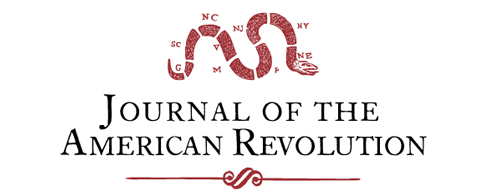



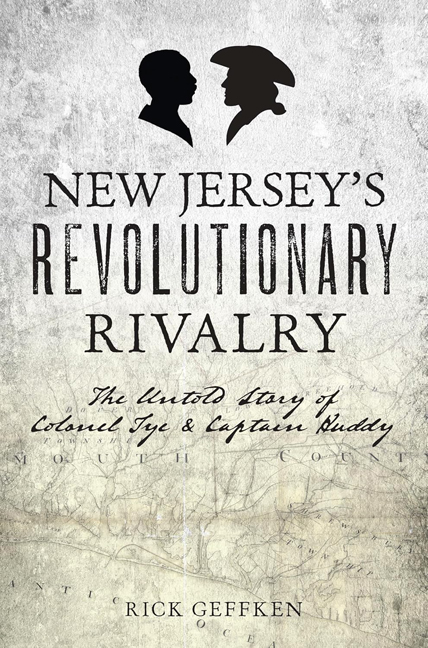
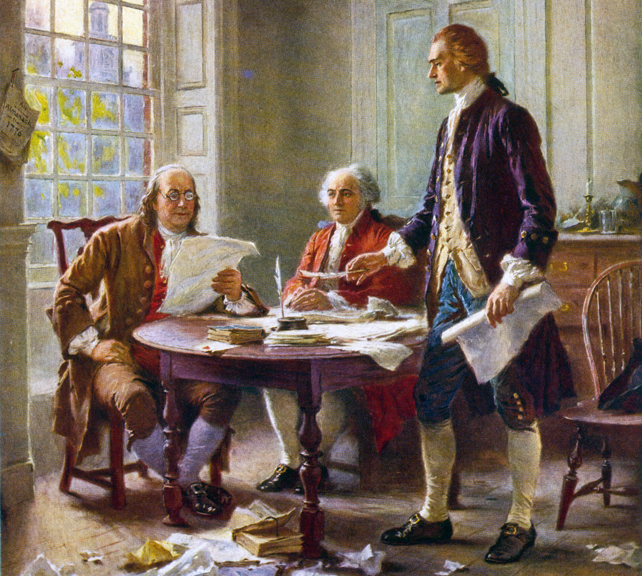
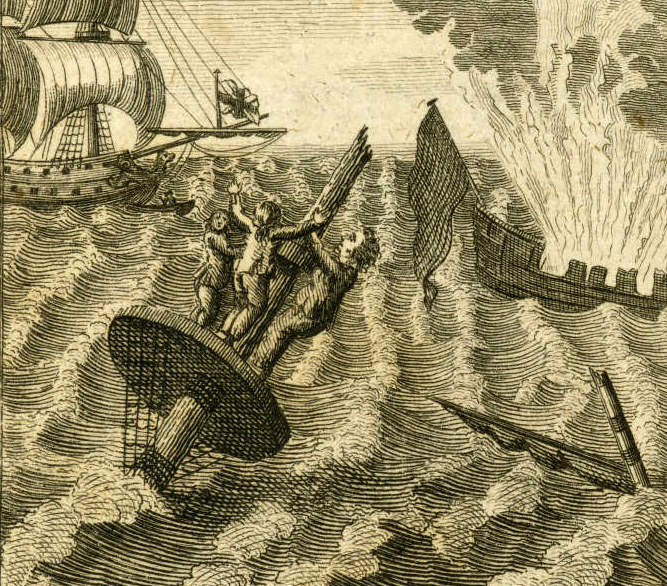

4 Comments
John, you have knocked it out of the park once again! The details here show how much work you put into this. The Virginia Continental Line after 1779 is incredibly confusing. You and Mike Cecere have made it comprehensible, which is a great service to the rest of us. Well done, and thank you!
Was the 2nd Detachment never out at Augusta? I recall one source that said they were, but that may have been an assumption based on the 1st Detachments’ time there. Your point near the end on cohesion and command is well taken. I have identified 8th Virginia vets in all three of Woodford’s provisional battalions and all three of Scott’s recruit detachments. There was clearly no effort to keep men these men together. On the other hand, Thomas Gaskins’ provisional regiment had three companies led by 8th Va veteran captains. Maybe a coincidence; maybe a change in approach.
Well done, my friend.
Well done
John, I enjoyed the article. Thank you. Though, in the second to last paragraph you state that some prisoners of war were sent to Jamaica. There are at least a couple dozen Charleston prisoners who state being taken to Jamaica as prisoners in their pensions. The Duke of Cumberland’s regiment which was formed from these prisoners was sent there in 1781 and remained there till 1783. Many of the men who noted being taken to Jamaica as “prisoners” cross-reference with Duke of Cumberland rolls. Any pensioner who stated he was sent to Jamaica as a prisoner was almost certainly (in my mind) sent there as a British soldier. Other Charleston prisoners who filed pensions noted being taken or sent to Nova Scotia where the DoC soldiers received land for their service. To me this is no coincidence. However, it makes sense. Pension applicants who were in British service would not admit to serving with the enemy if they wanted a pension.
John, Some excellent research on a challenging subject. Appreciate your efforts in sorting through the confusing Virginia formations. Keep up the research, very helpful.